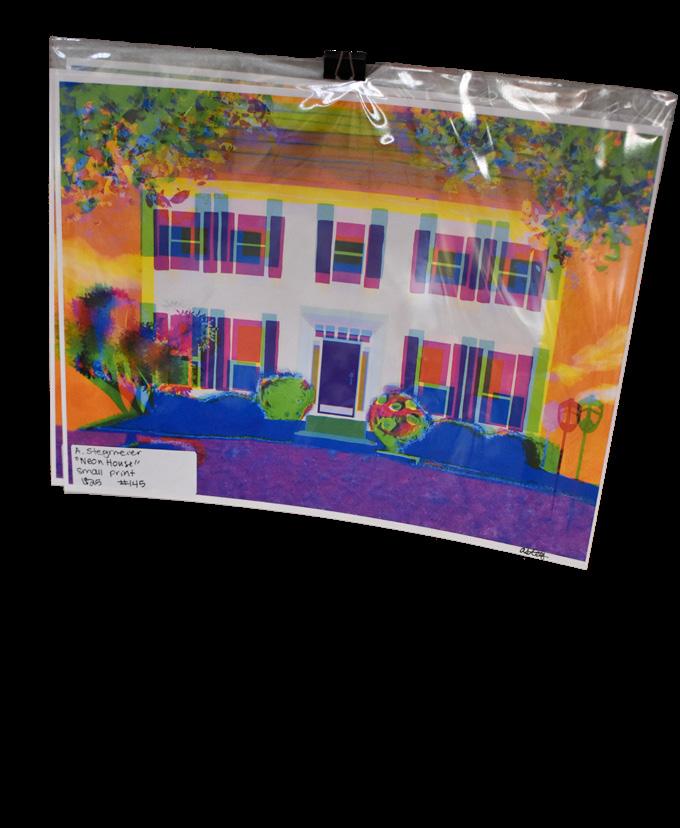
19 minute read
see FACULTY SUPPORT
from The Breeze 3.3.22
by The Breeze
EDITORS
Amy Needham & Charlotte Matherly
Advertisement
thebreezeculture@gmail.com
@Breeze_Culture
Recent events prompt call for increased mental health support for faculty
Jillian Carey / The Breeze
from FACULTY SUPPORT, page 1
“Giving each other grace, grace for ourselves and for others, that’s something new since the pandemic,” Conley said.
Conley said the Bridgewater College shooting and suicides at JMU have had a negative effect on faculty’s mental health as well. Because professors are part of the same JMU community, Debbie Sturm, Counseling & Supervision Program director and licensed professional counselor, said, “Anything that happens in the community affects all of us all.”
Sturm said she was especially impacted during the recent upheaval over mental health on campus because she lost her nephew to suicide two years ago — any time she hears about a suicide, she said, all of that heartache comes flooding back.
“During the pain of everything that happened, I’m really aware of my own grief and how acute it is,” Sturm said.
The overall feelings of faculty have been “overwhelmed and distraught,” Coltman said, and the combination of lingering mental health issues due to the pandemic and the recent tragedies have made faculty more concerned for themselves and their students.
Conley said she’s been more open about her own struggles with anxiety and how she sees a psychiatrist. She said this makes her students and other professors feel more open to talking to her about their own mental health issues.
The general attitude from faculty toward mental health among professors is overall positive, Sturm said — specifically, having empathy for each other, being willing to talk about things and being forgiving of yourself and others.
Conley and Sturm both spoke highly of their departments and said they feel the support around having these difficult conversations surrounding mental health.
For example, Sturm said she and her colleagues will occasionally meet for tea over Zoom just to spend time with each other and provide support.
“We don’t have enough counselors on campus. It’s walk-in hours only,” Conley said. “If someone’s in distress and in a fragile state,
Shannon Conley
Associate professor, integrated science and technology (ISAT)
about mental health is high.
“It’s something we talk about all the time,” Sturm said. “We’re really aware of conversations with each other and boundaries and workload.”
Coltman said she’s aware that many faculty members create their own groups to practice mindfulness. While this isn’t something officially offered by JMU, she expressed her support for professors who are taking their own initiatives to encourage openness they’re not just going to walk in. There needs to be something more solid, an appointment card, a time, otherwise they won’t just go.”
And Conley said it’s no longer “taboo” to call out of a meeting because of a therapy appointment.
Although mental health is the main focus area in Sturm’s department — making it common practice for these discussions to take place — she said she thinks it’s just as prominent among faculty in other departments based on conversations she’s had with other professors.
While it can be difficult for some to take the time to address their own mental health, there are resources on campus available for professors who are seeking help, Coltman said.
Faculty have access to the Counseling Center. Coltman also recommended The Center for Faculty Innovation (CFI).
“They have a long history of providing training and support for faculty,” Coltman said, “[such as] self-care, responding to staff and students in distress while you are also in distress.”
The Center declined a request for comment by The Breeze, saying in an email, “Unfortunately, none of the CFI staff have a background in mental health and do not feel comfortable speaking on the topic.”
While professors are doing what they can to provide support for their students, they’ve also begun including themselves in that conversation.
“We’re concerned about our students,” Coltman said, “but we have to put on our own oxygen masks before we put on others.”
For Sturm, the most important thing is to simply ask how people are.
“You don’t have to do anything big,” Sturm said, “but just stopping and noticing and asking how people are is a big deal.”
CONTACT Avery Goodstine at goodstaj@ dukes.jmu.edu. For more on the culture, arts and lifestyle of the JMU and Harrisonburg communities, follow the culture desk on Twitter and Instagram @Breeze_Culture.
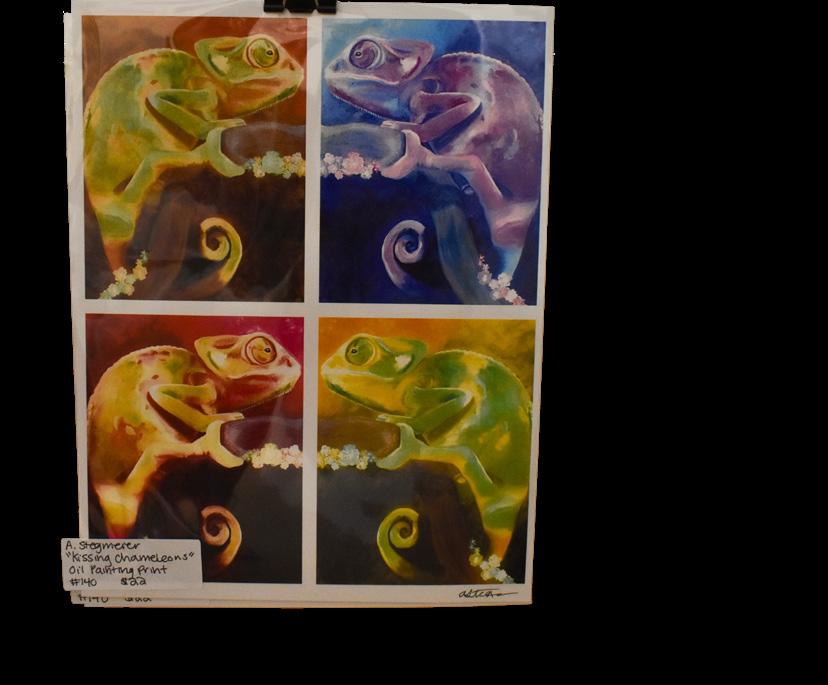
ASPIRATIONS ARTISTIC
JMU junior curates art show downtown
Courtesy of Anna Stegmeier
By KYLEE TOLAND
The Breeze
“Vote for your favorite; Best in Show” are the first words passersby see when walking up to the second floor of OASIS Fine Art & Craft. A ballot box is placed for anyone to vote on the piece of art they deem the “best.” And while walking around, the faint sounds of a flute can be heard while viewing the many canvases and frames holding various styles of paintings and drawings. Some pieces in black and white depict famous figures such as Ruth Bader Ginsburg; others are photographs with bright, vivacious colors.
In college, students take the skills they learn in class and apply them to real-world experiences. One art student is providing a platform for both herself and fellow students.
“I just really wanted an opportunity for students to really get out there and be a part of the art community,” Anna Stegmeier said.
Stegmeier, a junior studio art major, curated a student art show at OASIS in downtown Harrisonburg that exhibits and sells the work of artists in the Shenandoah Valley. From Feb. 1-26, Stegmeier and 18 fellow art students participated in the show — so far, she said, the feedback has been overwhelmingly positive.
“We had a lot of people come to our show opening, with a bunch of professors and [JMU] board members coming all at once,” Stegmeier said. “I heard really good comments about the artists’ work and how everything was set up.”
Stegmeier said she got the idea to curate a student art show so she could give other JMU art students an opportunity to incorporate their work in a community. Stegmeier said she’s the only student member at OASIS and wanted to give students a way to connect with the public and show off various works of art.
Isabella Swatosh, a junior graphic design major, was one of the art show’s 18 participants and said seeing her work displayed has made her happy.
“It’s probably the most public I’ve ever really made art besides putting it on social media,” Swatosh said. “It was really nice to have that exist in the minds of Harrisonburg people.”
Swatosh got involved with Stegmeier’s art show after an email was sent out about submitting pieces of art to the show. Swatosh’s piece, “Fluffy Asserting his Ecological Dominance,” was a perspective-based assignment from a drawing class and is a digital piece of a destroyed cityscape with a giant “Kaiju” — or a Godzilla-like creature — in the middle of it. Swatosh said she’s only been twice to see the show but has heard positive comments about her display.
“Since elementary school, I started thinking, hey, I want to actually make art a career,” Swatosh
said. “I was in second or third grade and just kind of started trying to work from there.” After graduation, Swatosh said her main goal is to work as a storyboard artist or character designer, and being a part of this show has given her the opportunity to publicize her work. “I’ve always kind of had a hard time with showing strangers my art unless it was online because you don’t have to see their reactions to it necessarily,” Swatosh said. “It was helpful having external sources actually look at it and kind of make it less of a scary private thing for me.” In high school, Stegmeier said, she wasn’t truly set on pursuing a career in art until her senior year, when her art teacher told her about the different options that colleges could offer regarding a job in art. Once she got into JMU, Stegmeier said, she was helped by both professors and fellow art students with her abilities. “There’s been a lot of people that have really encouraged me to continue my path,” Stegmeier said. “They have helped me a lot with learning more about art and how to get more involved within the community.” Throughout her college career so far, Stegmeier has been interning at art galleries, where she said she’s been teaching art to students and learning how to curate art shows. With the help of “really good professors,” Stegmeier said, her favorite part about being an artist has been the community work and participating in different downtown events such as the Harrisonburg Farmers Market, where she’s worked face-painting stands. “The one thing I Stegmeier organized a student art show at OASIS in downtown Harrisonburg. Sarah Handel / The Breeze love about downtown Harrisonburg is that everyone’s so involved within the community,” Stegmeier said. “Everyone’s willing to get together and host activities for everyone.” Though, Stegmeier said being an artist does have its challenges, such as making a good lesson plan and creating artistic prompts to help Stegmeier and other art students be inclusive. As someone who teaches others, Stegmeier said art education is meant to give students something to work with so that they can grow as an artist and create complex artwork. “It’s not just as simple as teaching how to do a skill set,” Stegmeier said. “It’s a lot more about developing creativity and allowing students to explore their interests.” Throughout her four years as an art student, Stegmeier said she’s created many paintings, drawings and woodshop work; she’s also participated in art shows like the one at OASIS. Stegmeier only had a few pieces of her work shown and was mostly in charge of curating the show, but a memorable moment for her, she said, was getting to meet the artists in her show in person after only communicating by email. “To actually meet [the artists] and match their face to their name was really nice,” Stegmeier said. “Now, I can see them in the halls [at school] and say hi.”
Although most participants in Stegmeier’s show were there to show off their work, JMU music students were also given the chance to perform. Taylor West, a sophomore, was one of two music students performing at the show opening night. She said she got involved with the show after a position to play was offered in her music service fraternity, Sigma Alpha Iota.
“I had plenty of time to really think about whether I wanted to do it or not,” West said. “I was very excited about it, so I took the opportunity.”
Playing the flute, West said, she only met up with her partner once or twice before the show’s opening to decide on the best pieces to play. Though she spent most of her time performing, West said she was able to see the different pieces of art displayed from where she was performing.
“It was just a very cool community and field to be in that I’ve never really been in before,” West said.
A memorable moment for West while performing was when a woman attending the show came up and took pictures of West and her partner playing their instruments. She said she was able to see just how enthusiastic people were about art, which is something she’d never seen before.
“I have never been one of those people [who is into art], but I’ve been that way about music my whole life,” West said. “It’s kind of cool to see people be [excited] about a different kind of thing.”
West said she’d love to perform in an art show like Stegmeier’s again based on the warm reception she received from the people at OASIS. She said that as a non-music major, she feels that opportunities like this help her and others show off their musical talents professionally.
“I thought it’s a great opportunity to have nonmusic majors be able to present themselves as a musician outside of an academic setting,” West said. “In the long run, I definitely want to do stuff like this more often [because] it’s a good opportunity to meet people.”
After graduation, Stegmeier said her dream job is to be a college art professor, but due to competitiveness in graduate school, she plans on becoming a high school art teacher. Her advice for her fellow art students who want to follow in her footsteps is to make connections with professors and older artists in the community and see what they have to offer outside of the classroom.
“It’s really nice to take time out of your own schedule to go and do something outside of the classroom,” Stegmeier said. “There’s so many things that you could be missing out on.”
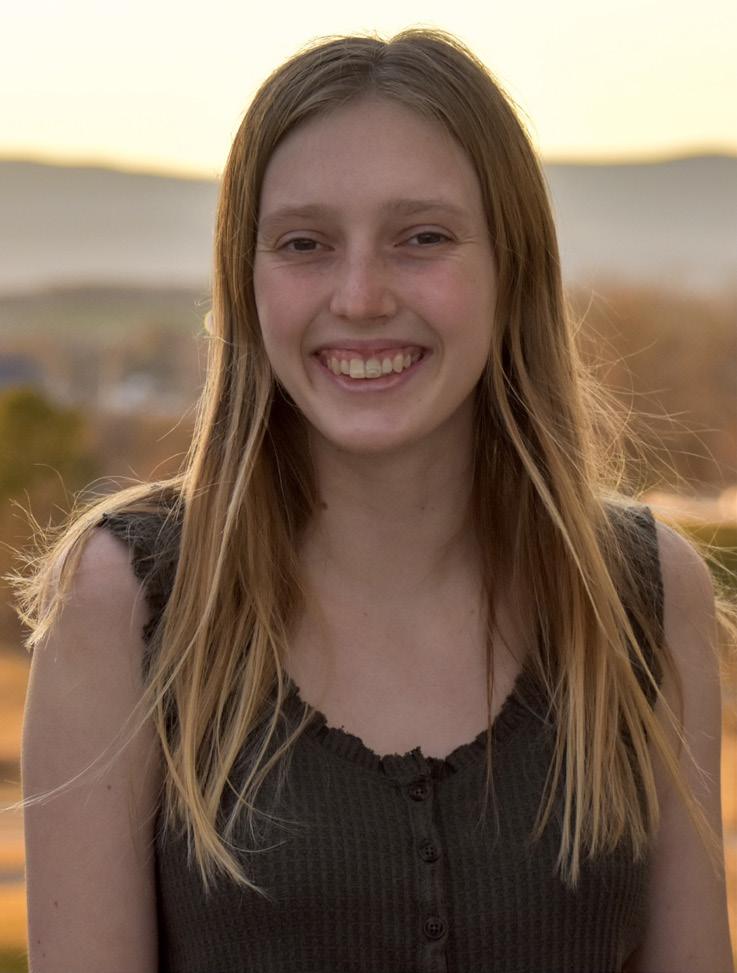
CONTACT Kylee Toland at tolandkm@ dukes.jmu.edu. For more on the culture, arts and lifestyle of the JMU and Harrisonburg communities, follow the culture desk on Twitter and Instagram @Breeze_Culture.
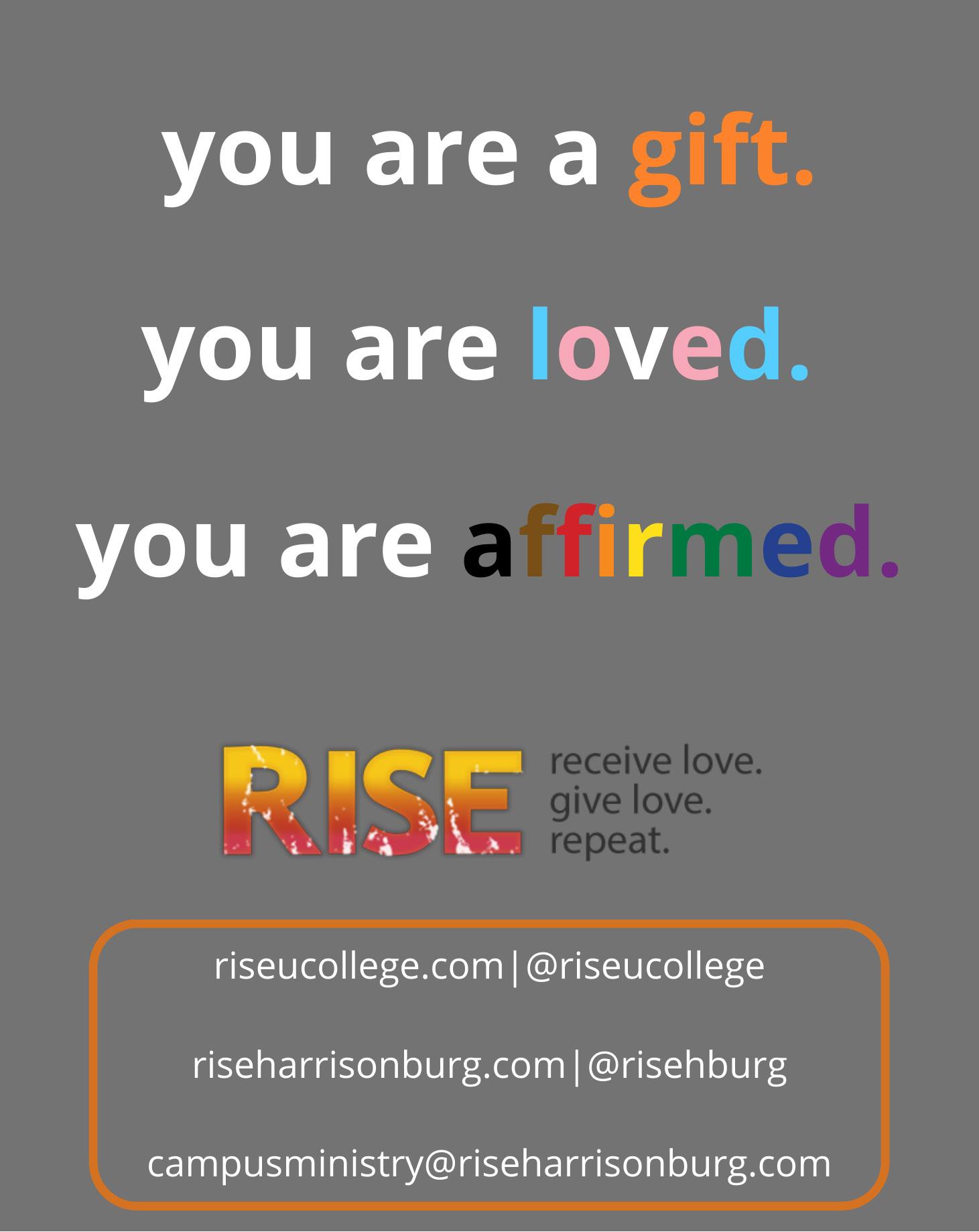
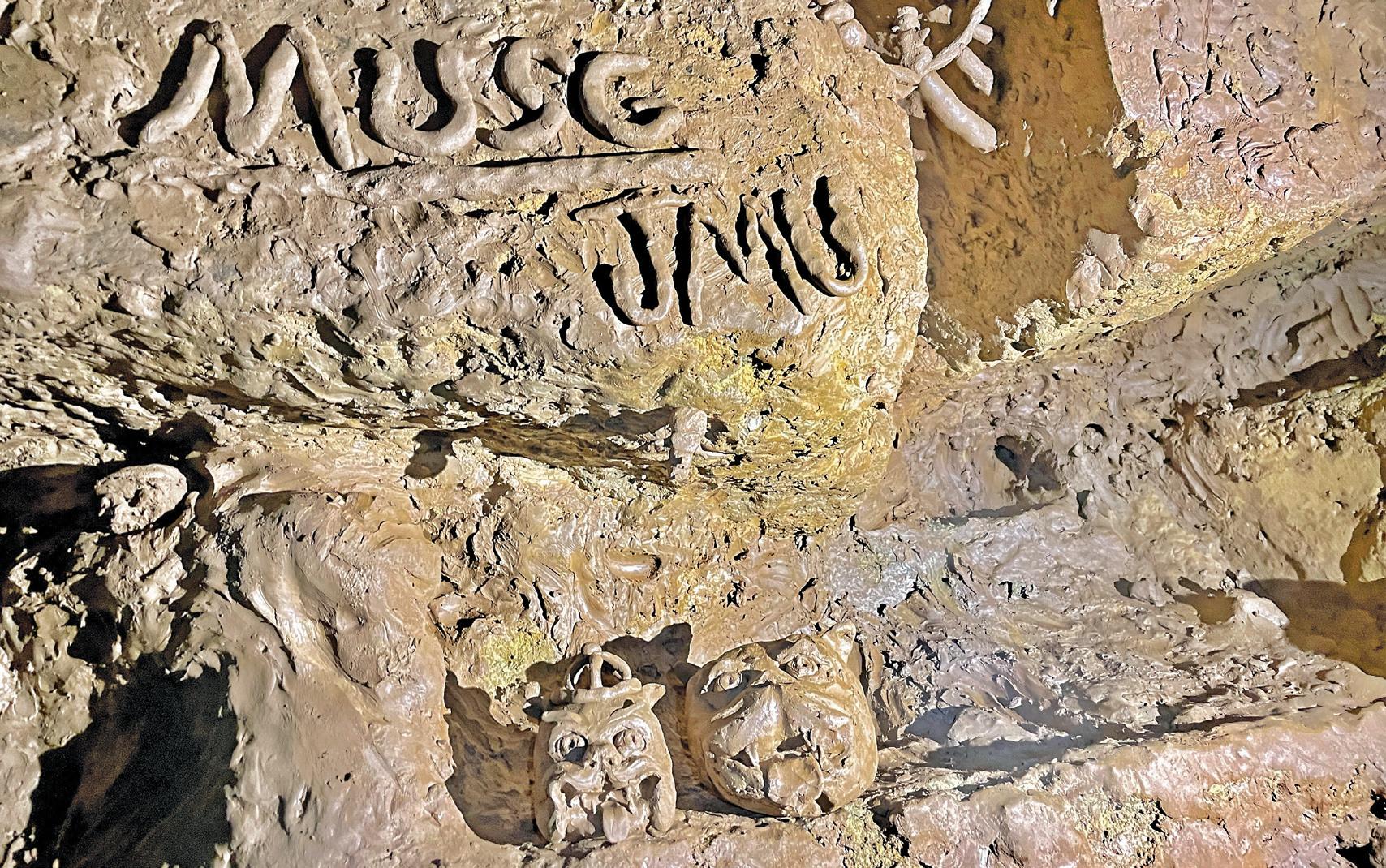
The JMU Caving Club explorers sometimes create characters like JMU’s Mascot, Duke Dog, from clay
found in caves. Photos courtesy of Jacob Whitlock
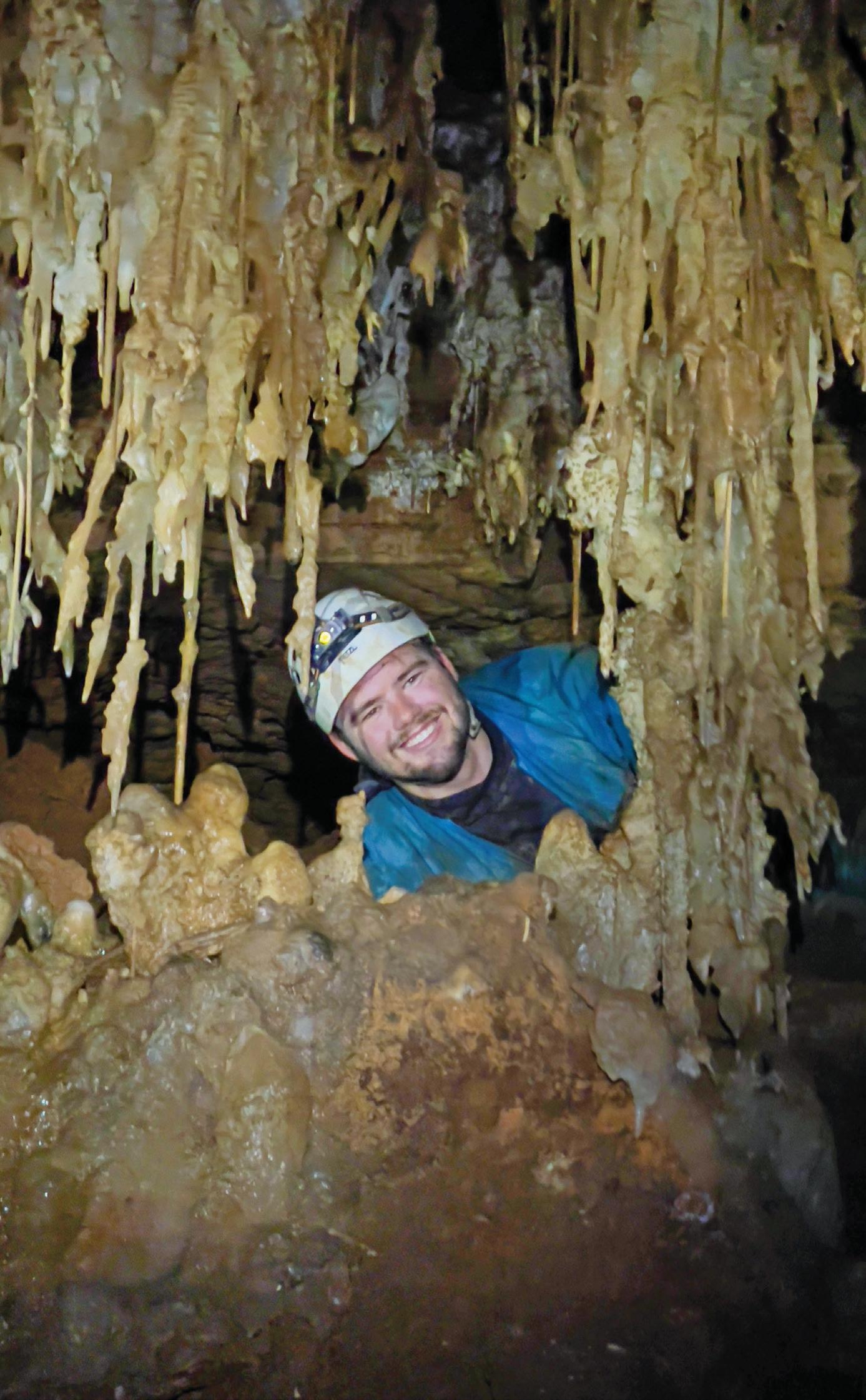
modern caveman
JMU senior explores Virginia’s underground with caving club
By MARIA COPELAND
The Breeze
In a cave, light is life.
When Jacob Whitlock leads a group into a cave, everyone has to bring multiple sources of light: a headlamp, two to three extra flashlights per person with backup batteries and even emergency candles.
“If your light goes out, it’s the darkest you’re ever going to get,” Whitlock, a senior geology major, said.
It’s roughly 55 degrees Fahrenheit yearround in Virginia caves, Whitlock said, and the air is so damp that everyone wears long sleeves and long pants to safeguard against hypothermia. They bring gloves to protect their hands and prevent damaging cave surfaces with the oil on their skin — according to the National Park Service, oil on human hands can hurt the growth of mineral formations. Whitlock wears a caving suit made of tough material, rain boots that come up to his thighs and knee pads to avoid bruises.
As the explorers — usually seven to 10 members or prospective members of the Madison University Student Grotto (MUSG), a JMU club for students interested in caving — wind their way through a cave, they might hear water dripping or the echoing sound of a flowing stream in the distance. Or there might be no sound at all, save for the group themselves.
“We talk, we joke,” Whitlock said. “We groan every time we have to crawl under something.”
Learning to lead
Whitlock said he’s been caving for a little over two years throughout Virginia.
Whitlock first began caving with a group called the Blue Ridge Grotto. He’s now the president of the JMU Caving Club, a student organization for cavers of all experience levels that leads club members on expeditions nearly every weekend. The best trip he’s been on, he said, is whichever one he did last.
“I love going down there and seeing things, just looking around,” Whitlock said. “You can look around and find faults in the rock, stalactites, stalagmites. The cave formations are absolutely spectacular.”
The club members primarily visit caves in Virginia, usually no more than 2 1/2 hours away from JMU. Some of Whitlock’s favorites are Paxton’s Cave and Kee Cave. During a school break, the group might travel farther away. It can take up to 6 hours to move through a cave, so the explorers devote most of a day to each expedition.
Whitlock said there are “tons” of caves in Virginia, but many of them are not open to explorers.
“I know four caves within 30 minutes of JMU,” he said. “Three of them are closed.”
Starting out in caving requires the assistance of an established group, such as a caving club. Caving groups keep track of possible locations, and Whitlock said they tend to keep a tight hold on that information because they don’t want caves to be shut down due to trespassers, since many caves are on private property. If a random person wanders into a cave on their own, they could very likely trespass on someone else’s property, and the owner might close down the cave to other visitors.
Jacob Whitlock leads club members through caves around Virginia, like Kee Cave.
“It’s very unlikely you’re going to be able to find the locations of very many caves on the internet,” Whitlock said. “They’re few and far between.”
Whitlock was taught how to lead a trip just recently, after two years of caving. He started leading groups made up of caving club members in spring 2021.
Leaders are entrusted with significant responsibility because it’s up to them to navigate, Whitlock said. There aren’t many cave maps, and the maps that do exist are difficult to read because they’re based on landmarks found in the cave. The leader memorizes the route through the cave and the landmarks along the trail.
If there’s a chance they might get turned around or need specific directions, cavers will refer to an agreed-upon marker. Whitlock uses playing cards to create a trail, or he’ll stack rocks or arrange them into the shape of an arrow leading out of the cave.
It’s also the leader’s responsibility to remember any unreliable areas, such as false floors — where layers of sediment erode and leave behind a ledge that appears to be solid. Sometimes a false floor might echo, warning the explorers, but Whitlock said they’re often sturdy enough to walk over and most caves are stable because they don’t change much.
To ensure safety, Whitlock advises taking at least four people on a caving trip so that if someone gets injured, another caver can stay with that person while the remaining two leave to find help. He said he hasn’t experienced any significant caving disasters, but makes sure to be prepared to handle any emergency situation responsibly.
“If something does happen, obviously we want to respond to it in a good way,” Whitlock said.
A team effort
A priority of Whitlock’s caving groups is caring for the caves themselves. The cavers sanitize their gear with Lysol after every trip so they don’t cross-contaminate bacteria and fungi between different caves.
Whitlock said he’s rarely run into animals while caving. He’s seen a frog before, and once, his group rescued a baby turtle from a cave, where it would’ve died. Sometimes, he said, he’ll see salamanders.
“[Salamanders] are really cool,” Whitlock said. “They’re pretty rare, so we want to protect them as best we can … Take pictures. Don’t blast them with your lights.”
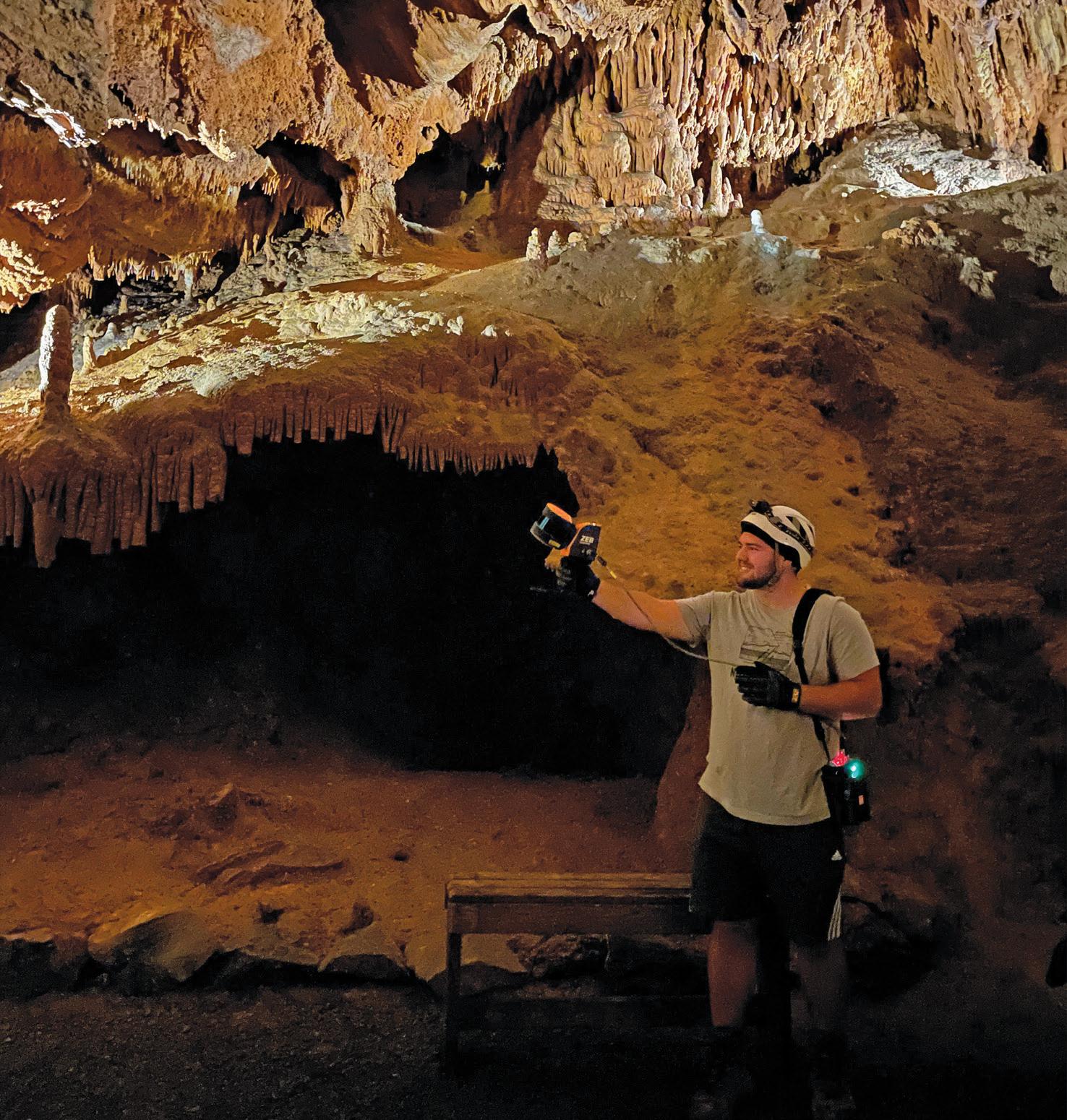
The handheld LIDAR scanner measures distance and produces a 3D scan of the cave used for mapping.
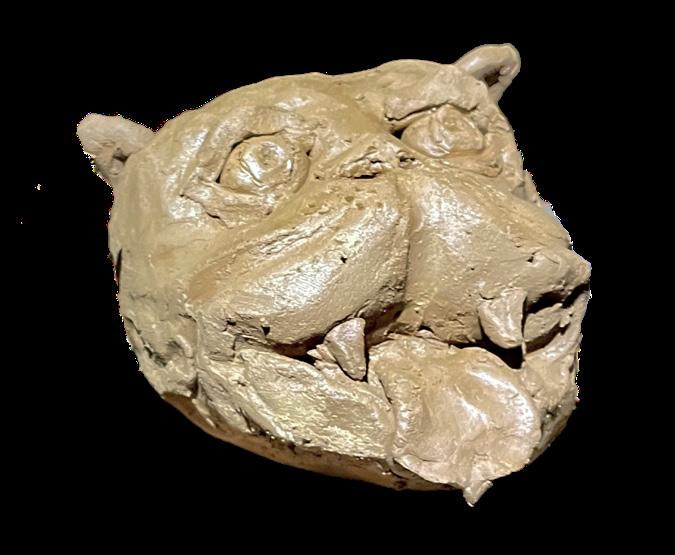
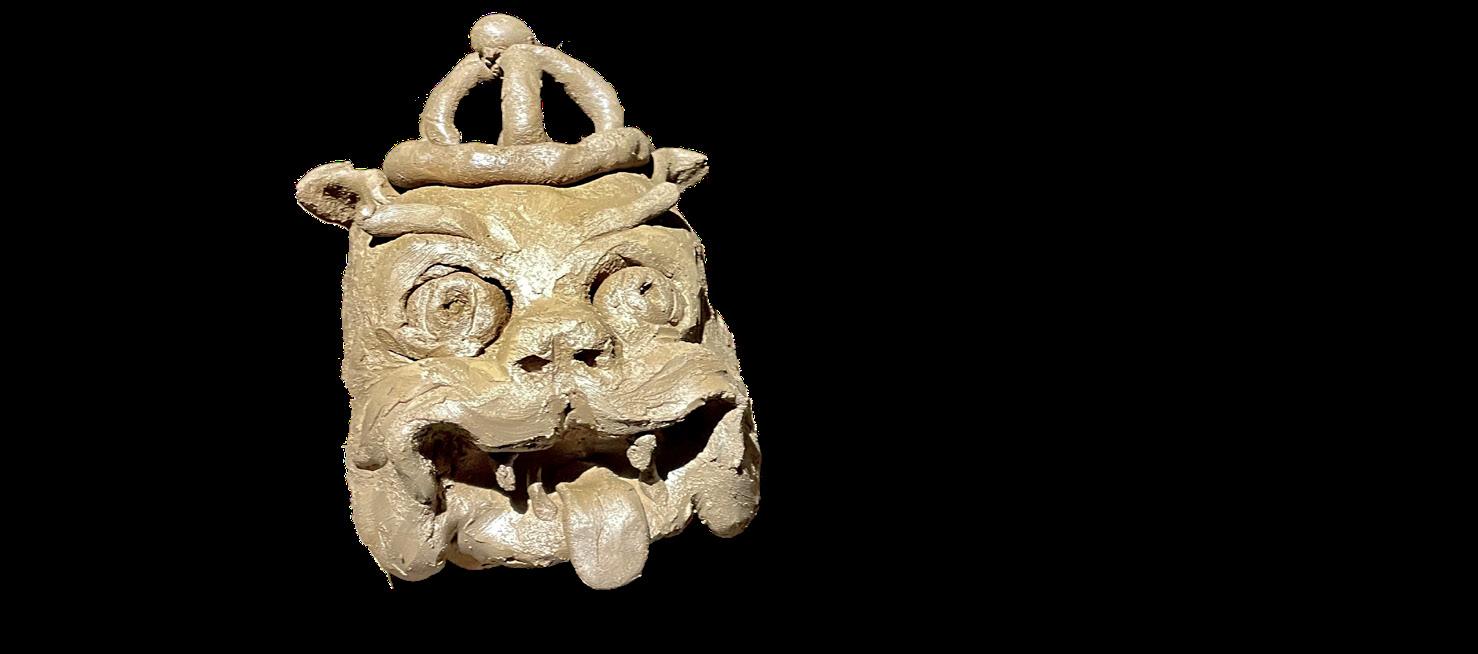
Whitlock has only seen a bat flying in a cave once while on a research trip. Along with other caving club members, he’s joined Angel Garcia, an assistant professor in JMU’s department of geology and environmental science, who’s pursuing a number of research projects in Grand Caverns — the largest show cave in the U.S. It’s located in Grottoes, Virginia, just under 20 miles from Harrisonburg.
Garcia initiated a collaboration between JMU and Grand Caverns last April and has worked there since last summer, using light detection and ranging (LIDAR) technology to create an interactive, 3D map of the cavern. He also has several other projects going on in Grand Caverns, such as identifying signatures left by tourists dating back to the mid-1800s, carbondating pieces of wood inside the cave and monitoring groundwater.
To produce the map of the cave, Garcia wields a handheld LIDAR scanner, which uses points of light to measure distance and produce a 3D scan. The result is a computer visualization of the passages and terrain of the cavern.
Garcia has also brought in geology students, geology club members and other volunteers — he said Whitlock has joined almost all of the trips.
It’s not difficult to teach students how to operate the scanner, Garcia said. He usually instructs students to scan for about 12 minutes.
“You can move as fast as you want or slow as you want,” Garcia said.
Whitlock said working with the scanner is “incredible” because it feels “so scientific.”
“It’s spinning in front of you, and you’re just walking around with it,” he said.
Lizzie Bryan, a freshman, said she signed up for the club at JMU’s Student Organization Night last fall because she’s always wanted to go caving. She joined Garcia’s volunteers last October and helped collect information for his projects by looking for signatures left by tourists on cave surfaces and finding pieces of wood to test.
“I had to crawl under this tight space to get a piece of wood that Dr. Garcia found, so that was fun,” Bryan said.
Caving serves as a good bonding experience for club members, Whitlock said.
“We did a caving club trip to the [University Recreation Center] ropes course, and one of the first things they had us do was bonding exercises, but we all knew each other so well at that point that we kind of flew through,” Whitlock said. “It was pretty funny, actually. We’ve done much harder exercises underground.” A cave that many people start with features a landmark known as the “elevator” — a steep drop about 30 feet high that requires cavers to grip the side of the wall with their arms and legs and then slowly inch their way down. “It’s actually pretty safe, but it looks terrifying,” Whitlock said. “If they start slipping, they’re just going to get caught on the wall. We know it’s safe.” Caving is a team effort, Whitlock said. “If someone’s struggling on an obstacle, we help them by either physically helping them or just giving them support by saying, ‘Hey, you got this. You put your foot here,’” Whitlock said.
He said caving has taught him to “just try things.”
“You have to get out of your comfort zone,” Whitlock said. “That’s a lot of what caving is. It’s a mental challenge as much as it is physical.”

